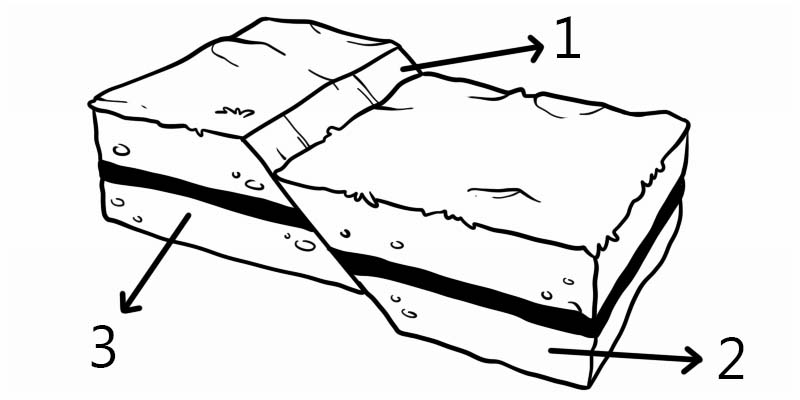Tectonic structures are usually the result of the powerful tectonic forces that occur within the earth. These forces fold and break rocks, form deep faults, and build mountains. Most of these forces are related to plate tectonic activity. Tectonic structures influence the shape of the landscape, determine the degree of landslide hazard, bring old rocks to the surface, bury young rocks, trap petroleum and natural gas, shift during earthquakes, and channel fluids that create economic deposits of metals such as gold and silver.
Folds, faults, and other geologic structures accommodate large forces such as the stress of tectonic plates jostling against each other and smaller forces such as the stress of gravity pulling on a steep mountainside. An understanding of the structures that shape the earth’s crust can help you see when and where the crust was subjected to pushing or pulling, terrane accretion or crustal rifting.
Tectonic structures are divided into two basic groups – brittle structures and ductile structures.
Let’s see how rocks respond to the forces that create tectonic structures. Stress refers to the forces that cause rocks to deform. There are three basic types of stress that deform rocks:
In response to stress, rocks will undergo some form of bending or breaking or both. The bending or breaking of rock is called deformation or strain.
Joints are fractures (cracks) in rocks along which no movement has occurred.
Joints develop perpendicular to the direction of tensional stress. They develop at angles to the direction of compressional stress.
Joints are important because they create open spaces in rock in which water, oil, or natural gas can move or be stored.
Joints also provide potential surfaces along which rocks can slide.
Joints allow groundwater and other liquids to move through rocks.
Faults are fractures (cracks) in rocks along which movement has occurred. Faults create environmental effects such as the movement of groundwater and can cause hazards such as rock slides and earthquakes.

The rocks on top of a fault are called the hanging wall.
The rocks beneath a fault are called the footwall.
Ductile rocks behave plastically and commonly become folded in response to stress. Folding can happen in the shallow crust if the stress is slow and steady and gives the rock enough time to gradually bend. If the stress is applied too quickly, rocks in the shallow crust will behave as brittle solids and break. However, deeper in the crust, where the rocks are more ductile, folding happens more readily.
The most basic types of folds are anticlines and synclines.
Anticlines are “up” folds; synclines are “down” folds.

In map view, a syncline appears as a set of parallel beds that dip toward the center. In a syncline, the youngest beds, the ones that were originally on top of the rest of the beds, are at the center, along the axis of the fold.
Anticlines and synclines most commonly form in sections of the crust that are undergoing compression, places where the crust is being pushed together. Crustal compression is commonly the response to stress from more than one direction, which causes tilting as well as folding. In crust that has been titled, folds “plunge” into the earth’s surface.
Plunging anticlines and synclines – A plunging anticline or a plunging syncline is one that has its axis tilted from the horizontal so that the fold dips into the earth.
A basin is a downward bulge in the rock layers, like a syncline without an axis. The beds all dip toward the center and the youngest rock is at the center.
Basins resemble synclines but the beds dip uniformly in all directions toward the center of the structure.
Basins are caused by compression and down warping.
Basins are circular features that arch downward. When basins are eroded, the youngest rocks are in the center of the basin structure.
A dome is an upward bulge in the rock layers, like an anticline without an axis. The beds all dip away from the center and the oldest rock is at the center.
Domes resemble anticlines, but the beds dip uniformly in all directions away from the center of the structure. Domes are caused by compression and uplift.
Domes are circular features that arch upward. When domes are eroded, the oldest rocks are in the center of the dome structure.
A section of the crust that has dropped down along two parallel normal faults is called a garben.
A block of crust that has been uplifted between two parallel normal faults is called a horst.